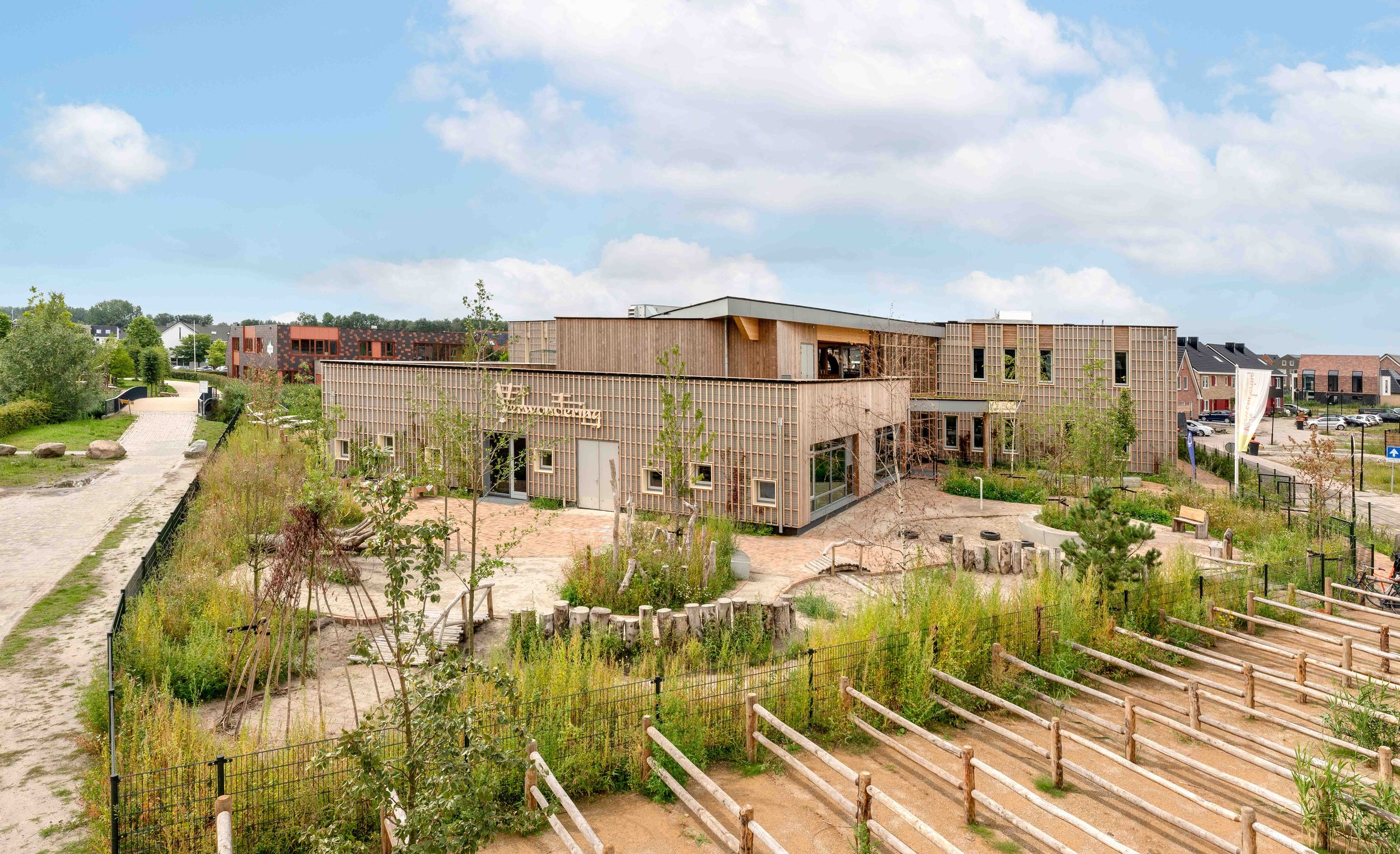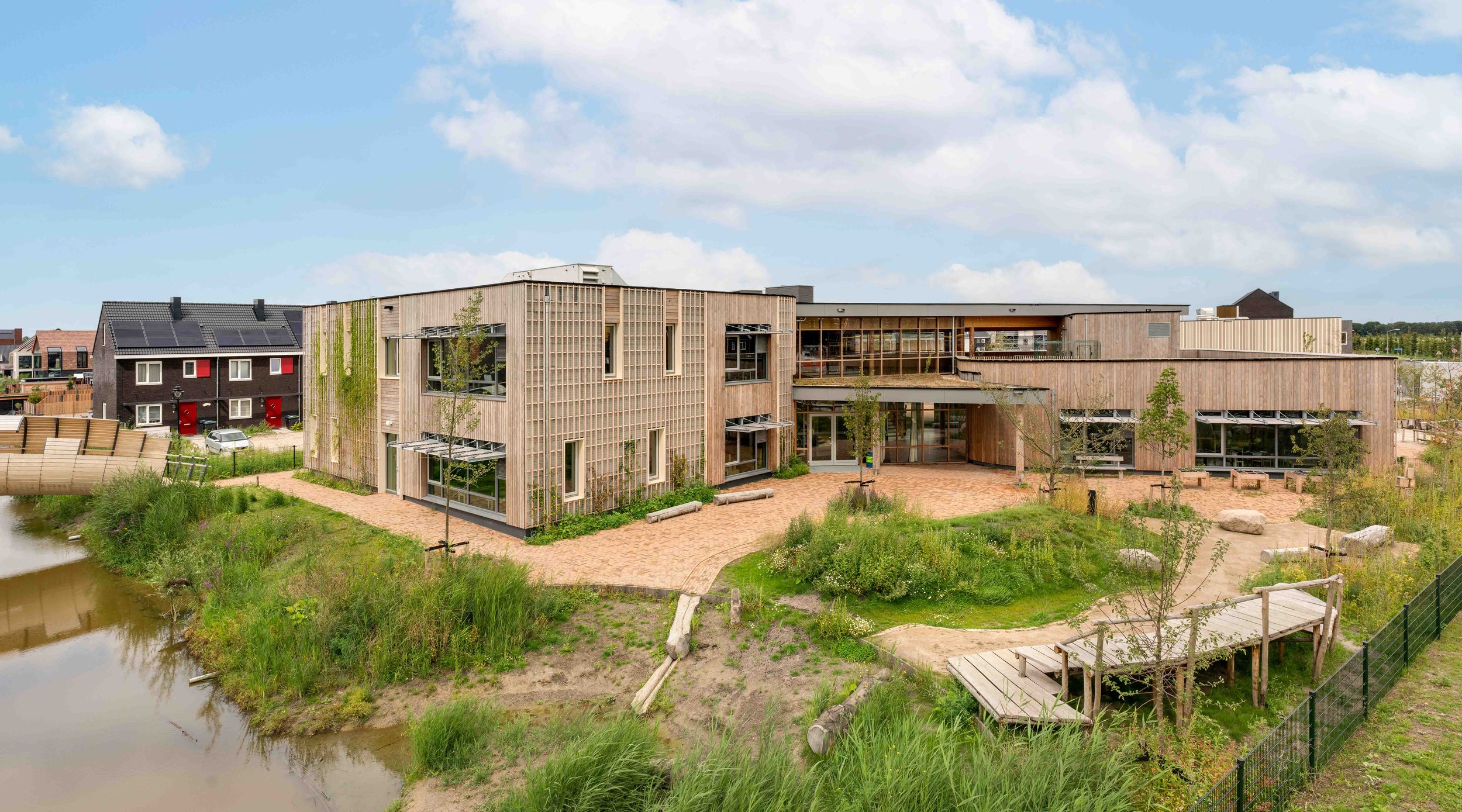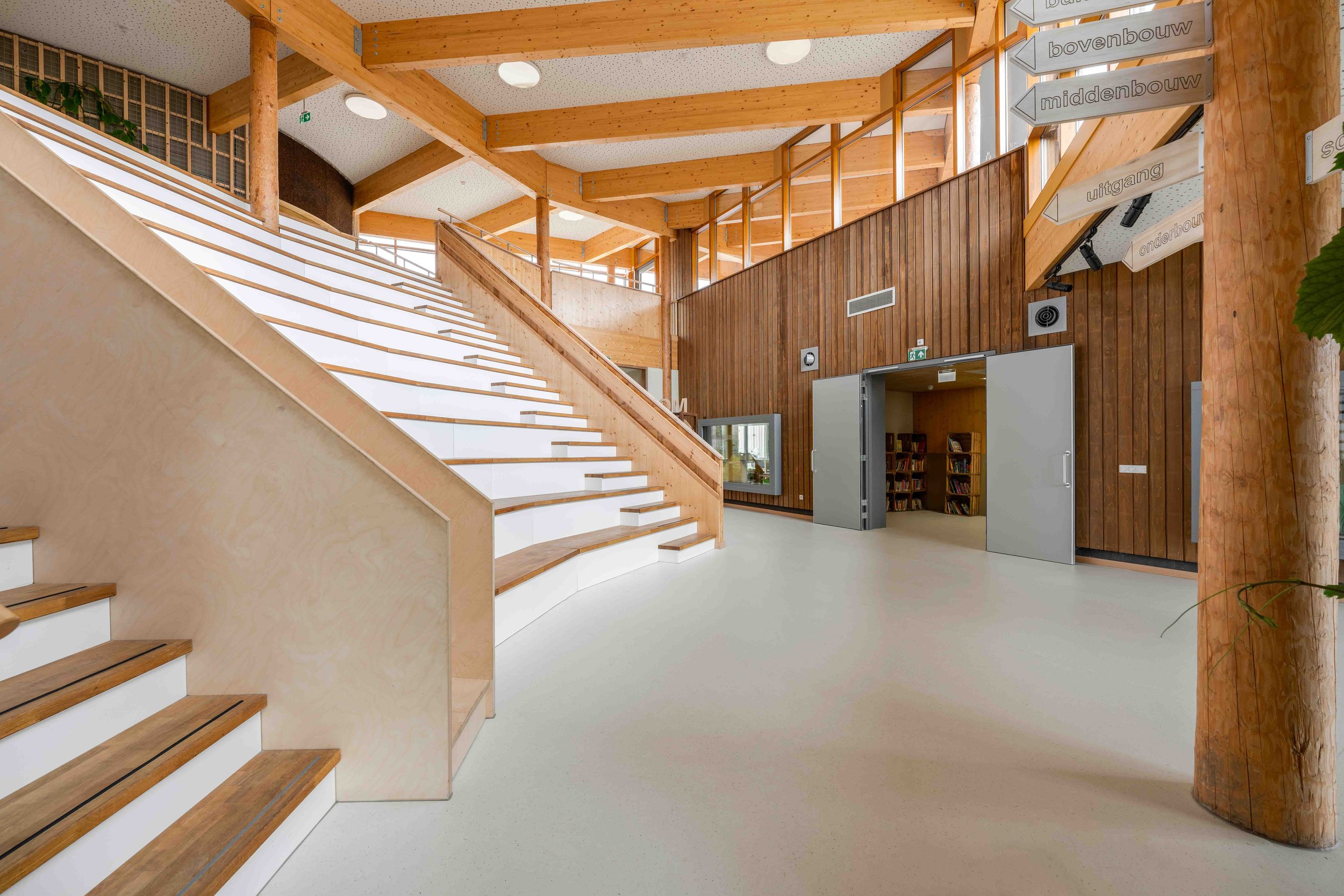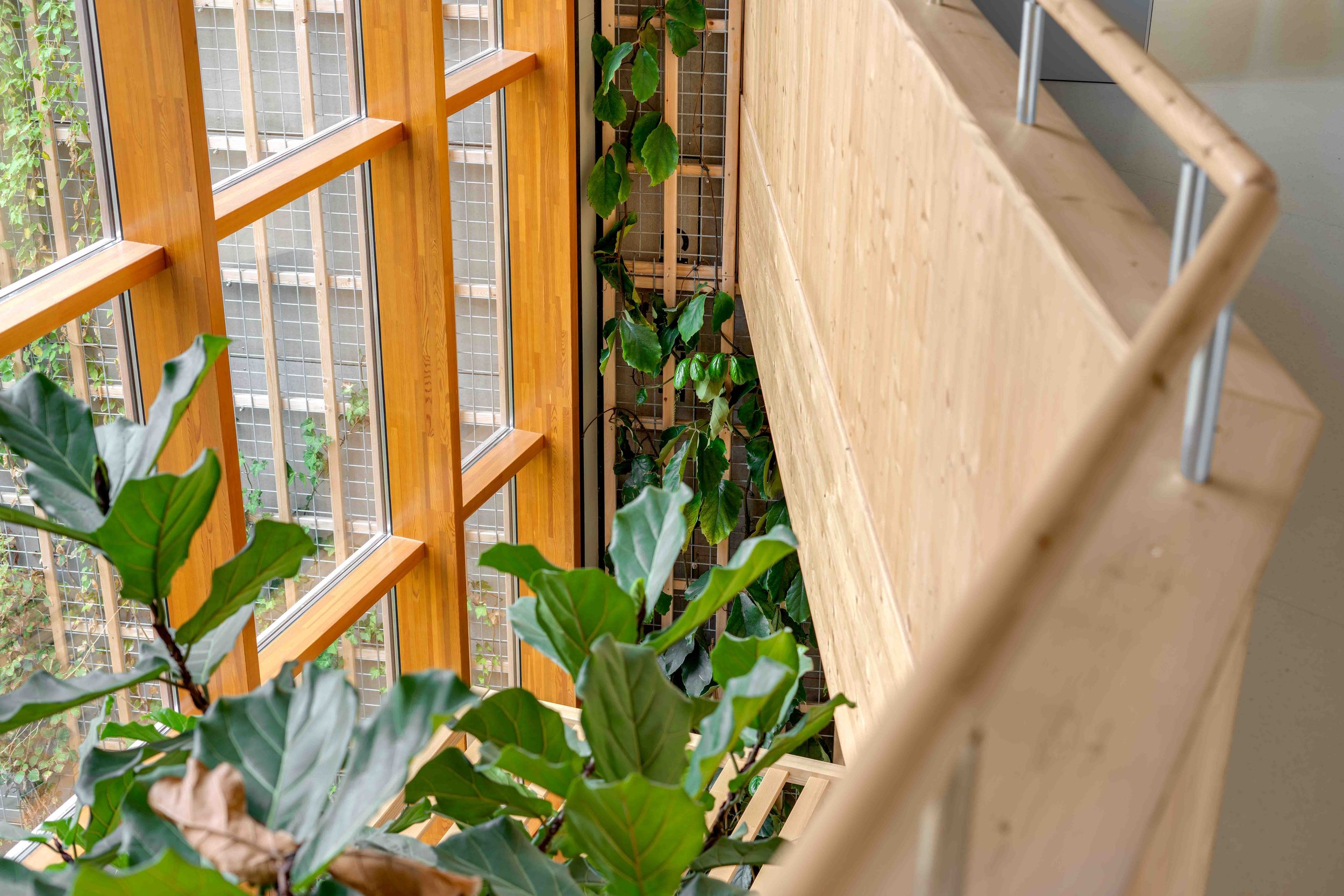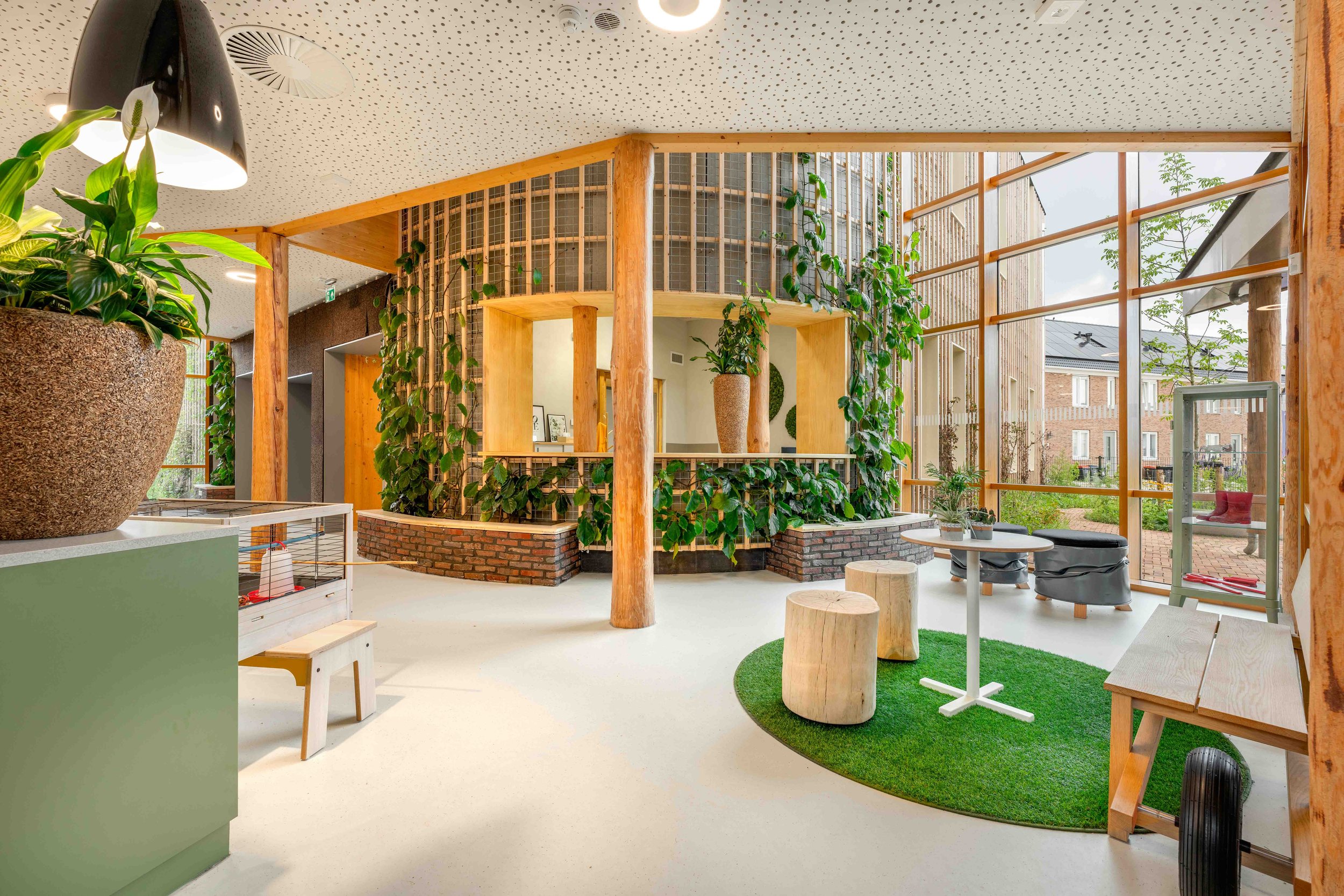How do we design schools so not only children are inspired, teachers want to come to work, places are healthy, the building sustainable, the landscape regenerative, and supports biodiversity? The answer is Biophilic Design. De Verwondering is a primary school in the Netherlands, designed by architecture firm ORGA. The design won the 2023 Stephen R. Kellert Biophilic Design Award from Living Future Europe in 2023, and justifiably so and is featured in the Education issue of The Journal of Biophilic Design.
The name of school means ‘sense of wonder’ or 'amazement', referring to the sensation of curiosity in children that is triggered when they come into contact with the natural world. Any parallels with ‘The Sense of Wonder’, Rachel Carson’s timeless publication from 1960, are coincidental, but both very much speak to the same sentiment.
Photos of the School courtesy of Robin Visser
In this podcast we speak with Gijs Bruggink, Chef de bureau of ORGA and discuss the importance of using Natural building materials, and how we need to push boundaries for sustainable and regenerative buildings.
Gijs describes the school for our listeners, and you can see visuals of it here on the Journal website. There are three squares, with a triangular area between them, leaf shaped roof across it central area for the kids, there are big wooden steps up to the second floor, a specially designed naturally playground around he school, and there’s lots of greenery. Plus the façade has big wooden grids which allow climbing plants to grow up, so the whole school will be covered in green. There are columns in the central area, stripped tree trunks carrying the structure, sanded and oiled. Plus there is natural ventilation, separate access hatch, outlets, where a chimney effect draw fresh air 24hrs a day into the building smell of new cut grass, or smell of rain on the earth.
The difference the Biophilic Design of the school has made to the teachers, staff, and children is phenomenal, and it also shows when an organization wants to do something better with nature deeply embedded into it right from the start of the project. The difference it can make to the business, the reduction of staff and student absenteeism, the improved recruitment, overall wellbeing, air quality, acoustics and so much more.
Generally, clients are seeing the benefits of Biophilic Design, and more and more Gijs and his firm are working with them from the start, rather than fight the battle.
“It is an interesting time for designers. There are a lot of problems which need solutions nowadays with climate change and biophilic design just has a lot of answers. Not only is it beautiful but it's interesting from the health perspective and it's beneficial from a business perspective because if your users of the building are able to perform better to be more productive and they feel better, it's good for your business. There's a lot of research and science supporting these these ideas and these benefits,” says Gijs.
One of the wonderful things about the Der Verwondering design is that they have created a really healthy learning environment for children and the people working there to help them get a good education. There are also all sorts of connections to nature in the building which builds affinity with nature, and children can discover things on their own, they have a natural adventurous inquisitive nature.
We also discuss how wood lasts a really long time, and how you can use different types of wood and natural wood finishings that protect the materials of your buildings.
The Principal was at the previous school and now also at this one, and has said that the children are right at home right away in the new school with no long adjustment period. They kids can really focus on work after a break outside in nature and this focus is a big change than before. There is less absenteeism and attendance a lot better, so that along with improved recruitment it makes financial sense too.
To read more about it and see more images, Gijs also wrote in our Education issue of The Journal of Biophilic Design Printed copy https://journalofbiophilicdesign.com/shop/pre-order-journal-of-biophilic-design-issue-7-education-paperback-printed-version
Ebook PDF. https://journalofbiophilicdesign.com/shop/olwe3aq4uukmg3k3o65o1n4k1fhvww
ORGA architect: https://www.orga-architect.nl/
Gijs Bruggink: https://www.linkedin.com/in/gijsbruggink
A quote from Gijs article in Education Issue 7 of The Journal of Biophilic Design:
“The school as a biotope - The way the spaces in the building work together is analogous to the system of natural habitats: shared spaces in nature that allow species to both thrive and coexist. Pupils spend most of the time in an ‘ecotope’ with children of the same age, the classroom. Three clusters of classrooms, including a small gym and an outdoor classroom on the roof form ‘habitats’ where pupils meet children of adjacent ages. A couple of times each day they venture outside of the familiar surroundings of the habitat, into the larger ‘biotope’ of the school complex. For example, to the central gathering area for school meetings or to the playground outside, where they can learn more about nature and the world.”
To buy a copy of The Journal of Biophilic Design visit our website www.journalofbiophilicdesign.com or from Amazon. If you like our podcast and would like to support us in some way, you can buy us a coffee if you’d like to, thank you x
Credits: with thanks to George Harvey Audio Production for the calming biophilic soundscape that backs all our podcasts.
Did you know our podcast is also on Audible, Amazon Music, Spotify, iTunes, YouTube, Stitcher, vurbl, podbay, podtail, and most if not all the RSS feeds?
Facebook https://www.facebook.com/journalofbiophilicdesign/
Twitter https://twitter.com/JofBiophilicDsn
LinkedIn. https://www.linkedin.com/company/journalofbiophilicdesign/
Instagram https://www.instagram.com/journalofbiophilicdesign
